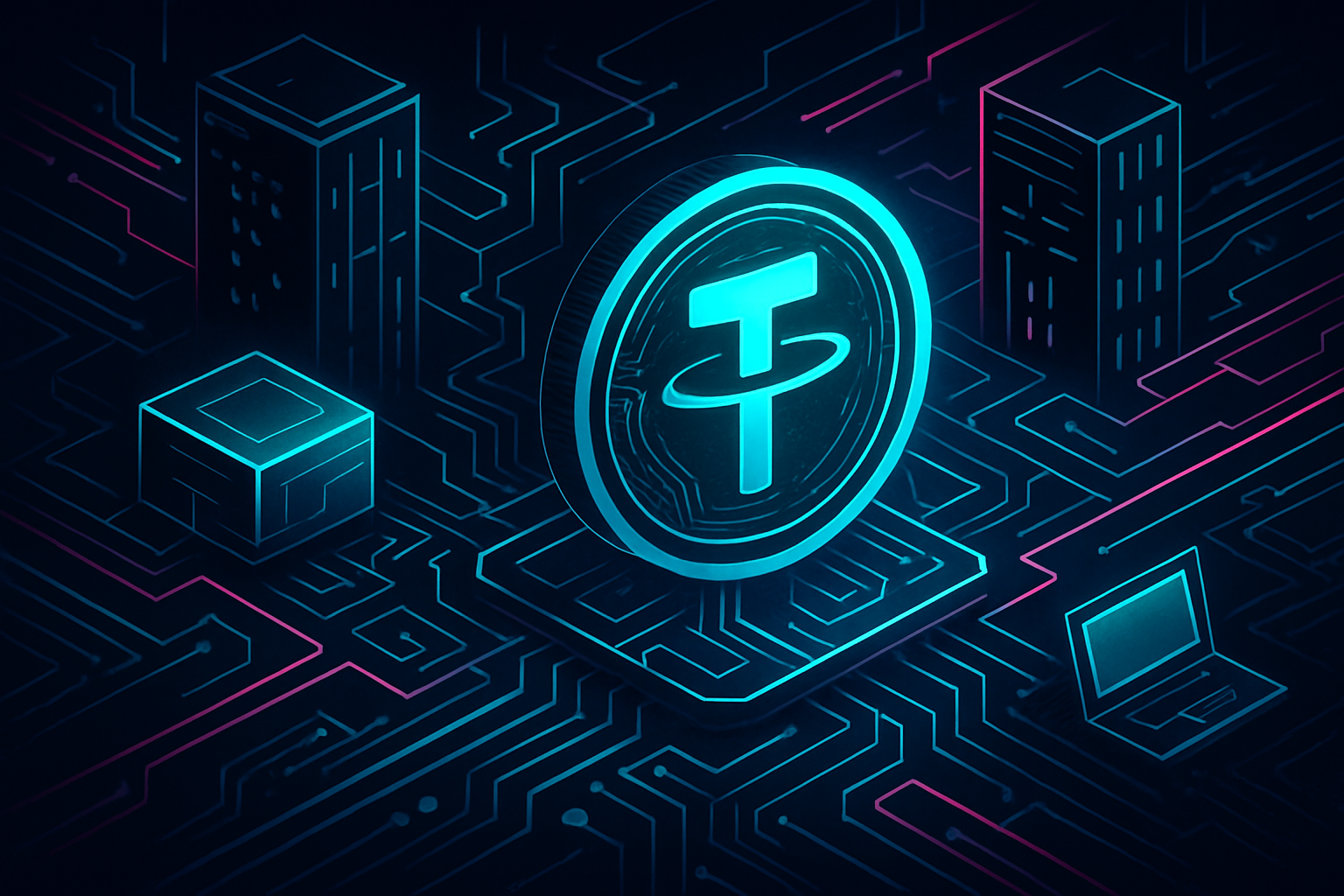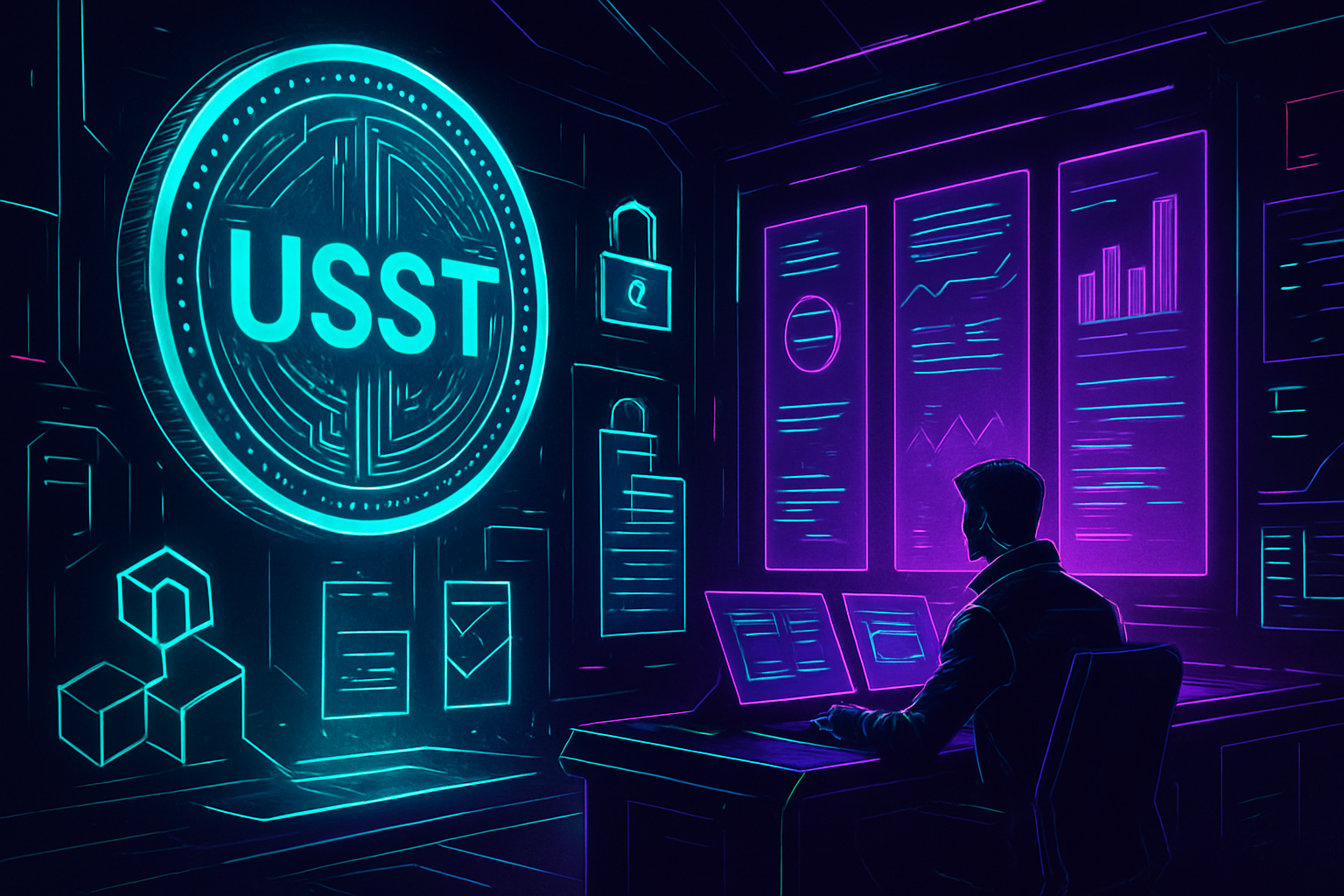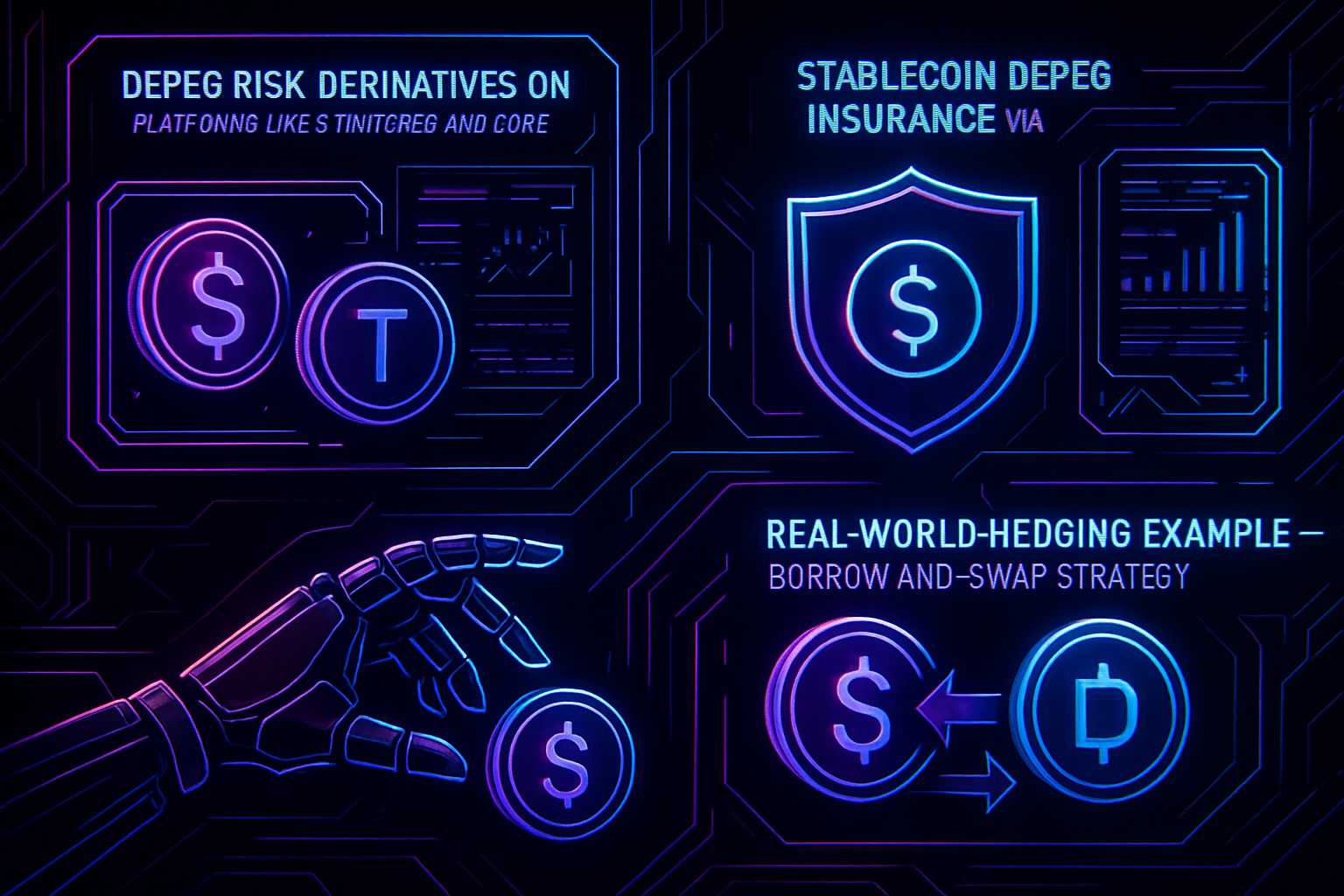
Stablecoins like Tether (USDT) sit at the heart of the decentralized finance landscape, promising a 1: 1 peg with the US dollar and enabling frictionless movement of value across protocols. Yet, as we move into late 2025, persistent headlines about depegging events and protocol vulnerabilities have forced investors to rethink how stablecoin risk is managed at the protocol level. The recent stability of Polygon Bridged USDT (USDT) at $1.00 (24h High: $1.00, 24h Low: $0.9999) demonstrates both the promise and fragility of these digital dollar substitutes.
Against this backdrop, Stablechain’s USDT-Optimized Layer 1 has emerged as a strategic response to mounting concerns over stablecoin depeg risk. By focusing on transparency, collateral management, regulatory compliance, and technical resilience, Stablechain aims to provide the next evolutionary step in stablecoin infrastructure, one that institutional allocators and sophisticated DeFi users are watching closely.
Why Depeg Risk Remains Front-and-Center in 2025
The crypto industry’s collective memory is long when it comes to stablecoin failures. From algorithmic collapses to liquidity crunches in times of market panic, depegging remains a systemic threat with far-reaching consequences for DeFi markets and investor portfolios alike. According to Elliptic’s Stablecoin Security Risks in 2025, real-time monitoring of prices and market depth is crucial for early warning signals, a lesson repeatedly underscored by incidents where USDT or its competitors have slipped below their peg during periods of stress.
Recent academic work (SoK: Stablecoin Designs, Risks, and the Stablecoin LEGO) further highlights that while fiat-backed stablecoins like USDT have mitigated some risks via robust reserves, lingering vulnerabilities, such as insufficient collateralization or opaque reserve management, continue to undermine trust. Meanwhile, regulatory scrutiny has intensified following high-profile failures; as noted by Goldman Sachs’ Stablecoin Summer, the GENIUS Act has now established a federal regulatory framework for stablecoins in the United States.
The Four Pillars of Stablechain’s Risk Mitigation Architecture
Stablechain’s Layer 1 solution introduces a suite of features designed specifically to counteract the most common vectors for depegging:
- Enhanced Transparency and Auditing: Every USDT token on Stablechain is matched by real-time audited reserves. This transparency not only builds user confidence but also facilitates external verification, enabling market participants to independently assess reserve sufficiency at any moment.
- Robust Collateral Management: Advanced algorithms dynamically manage collateral pools for optimal liquidity and risk-adjusted exposure. This ensures that even during periods of volatility or heavy redemptions, reserves remain liquid enough to honor all outstanding tokens at par value.
- Regulatory Compliance: By proactively aligning with new legislative requirements such as those set out under the GENIUS Act, Stablechain reduces headline risk from potential enforcement actions or sudden regulatory shifts, a nontrivial factor given recent developments in Washington.
- Technical Resilience: The platform leverages security best practices, from formal verification of smart contracts to circuit breakers that can halt suspicious flows, to reduce attack surfaces that have historically led to multi-million dollar losses elsewhere (source).
Circuit breakers are not just a technical feature, they’re an insurance policy against cascading failures when markets get irrational.
– Oscar Frasier
The Institutional Case for Layer 1 Stablecoin Protocols
The rise of dedicated Layer 1 chains optimized for stablecoins marks a turning point in how both retail users and professional allocators approach digital dollar risk management. Unlike generic blockchains repurposed for multiple token types, a purpose-built chain like Stablechain can integrate native price oracles, automated compliance checks, and reserve attestation mechanisms directly into its consensus layer, all designed with one goal: minimizing depeg probability.
Tether (USDT) Price Stability Prediction 2026-2031
Professional outlook on USDT price stability considering Stablechain’s Layer 1 technology, regulatory trends, and market risk factors.
| Year | Minimum Price | Average Price | Maximum Price | Year-over-Year Peg Stability (%) | Key Scenario Insights |
|---|---|---|---|---|---|
| 2026 | $0.9950 | $1.0000 | $1.0050 | 99.98% | Stablechain’s enhanced transparency and regulatory compliance support robust peg stability. Minor deviations possible during high volatility. |
| 2027 | $0.9940 | $1.0000 | $1.0060 | 99.97% | Increased institutional adoption and ongoing regulatory clarity further strengthen peg, but isolated technical or market shocks may cause brief dips. |
| 2028 | $0.9935 | $1.0000 | $1.0070 | 99.96% | Continued integration with DeFi and TradFi; competition rises but Stablechain’s resilience keeps peg mostly intact. Potential for rapid recovery from rare depegs. |
| 2029 | $0.9925 | $1.0000 | $1.0080 | 99.95% | Market expansion brings higher transaction volumes and stress tests, but robust collateral and auditing maintain stability. Minor depegs possible under systemic events. |
| 2030 | $0.9920 | $1.0000 | $1.0090 | 99.94% | Evolving regulatory frameworks and cross-chain use cases test USDT, but innovative risk management keeps peg deviations minimal. |
| 2031 | $0.9910 | $1.0000 | $1.0100 | 99.93% | Long-term adoption and new competitors may challenge dominance, but Stablechain’s tech ensures persistent peg with only rare, short-lived deviations. |
Price Prediction Summary
USDT is expected to maintain strong price stability through 2031, with only minor and brief deviations from the $1.00 peg. Stablechain’s USDT-optimized Layer 1, coupled with enhanced transparency, robust collateralization, and regulatory compliance, significantly reduces depeg risk. While rare, short-lived deviations below or above $1.00 may occur during extreme market events, the overall outlook remains highly stable, supporting USDT’s role as a leading stablecoin.
Key Factors Affecting Tether Price
- Stablechain’s Layer 1 technology: Enhanced transparency, auditing, and collateral management fortify the peg.
- Regulatory changes: Ongoing global stablecoin regulations and compliance requirements.
- Market adoption: Broadening use in DeFi, TradFi, and payments boosts demand and liquidity.
- Technical resilience: Improved smart contract and platform security reduce systemic risk.
- Competition: New stablecoins or CBDCs may test USDT’s market position.
- Macro events: Black swan market events or systemic crypto shocks could cause temporary depegs.
Disclaimer: Cryptocurrency price predictions are speculative and based on current market analysis.
Actual prices may vary significantly due to market volatility, regulatory changes, and other factors.
Always do your own research before making investment decisions.
This shift is particularly salient given current market conditions; with Polygon Bridged USDT holding steady at $1.00, even minor deviations become headline news due to their potential systemic impact (source). As more capital flows into DeFi protocols reliant on robust dollar-pegged assets, demand grows for infrastructure purpose-built around risk mitigation rather than mere transactional throughput.
For institutional participants, the calculus is straightforward: operational resilience and regulatory clarity are now prerequisites, not luxuries. Stablechain’s design choices, such as embedding automated reserve proofs and on-chain collateralization ratios, offer a degree of transparency that legacy stablecoin issuers have struggled to match. In an era where both the Federal Reserve Bank of New York and major consultancies liken stablecoins to money market funds, the ability to demonstrate one-to-one backing in real-time has become table stakes for onboarding serious capital.
Stress Testing and Real-Time Monitoring: From Theory to Practice
What sets Stablechain apart is its commitment to continuous stress testing and live analytics. Drawing from research published in Algorithmic Stablecoins: Mechanisms, Risks, and Lessons, rigorous scenario modeling, combined with circuit breakers, enables Stablechain to respond dynamically to sudden liquidity shocks or anomalous trading activity. By integrating these features at the protocol level rather than as afterthoughts or third-party add-ons, Stablechain positions itself as a first-mover in proactive stablecoin risk management.

The platform’s dashboard provides granular visibility into key metrics such as reserve composition, redemption queues, and on-chain transaction flows. This empowers users, whether they are DeFi protocols or institutional treasurers, to make data-driven decisions when market turbulence looms. As highlighted by Elliptic’s 2025 assessment, “real-time monitoring of stablecoin prices, volumes, and market depth can give early warnings of potential depegs. ” With Polygon Bridged USDT currently priced at $1.00, even a $0.0001 move below par is enough to trigger automated alerts and preemptive liquidity actions.
A Blueprint for Portfolio Hedging in the Era of Tail Risk
The systemic interconnectedness of DeFi tokens means that a single depegging event can ripple through lending markets, derivatives platforms, and cross-chain bridges within minutes (Mapping Systemic Tail Risk in Crypto Markets). For both retail investors and asset managers seeking robust stablecoin hedging solutions, Layer 1 chains like Stablechain offer practical tools for mitigating exposure:
- Automated Stop-Loss Mechanisms: Users can set custom thresholds for USDT price deviations (e. g. , below $0.9999), triggering instant redemptions or asset reallocations before losses compound.
- Real-Time Collateral Adjustments: Protocol-integrated risk engines automatically rebalance reserves based on market signals or anticipated stress events.
- Diversified Reserve Backing: Beyond fiat assets, Stablechain explores multi-asset collateral baskets designed to buffer against idiosyncratic shocks.
This architecture aligns with best practices outlined by TRM Labs’ risk mitigation blueprint for banks entering the stablecoin space: compliance-first design, layered security controls, and transparent reporting standards.
Looking Ahead: The Strategic Edge of Risk-Native Blockchains
The future of stablecoins will be shaped by protocols that treat risk management not as an overlay but as core infrastructure. As regulatory frameworks mature globally, and investor expectations shift toward greater transparency, the demand for purpose-built solutions like Stablechain will only intensify. The current stability of Polygon Bridged USDT at $1.00 provides a momentary sense of calm but underscores how quickly sentiment can shift if trust is shaken or technical safeguards fail.
The lesson for allocators is clear: portfolio resilience in DeFi starts with choosing infrastructure where risk controls are native features rather than optional extras. In this landscape, Stablechain’s USDT-Optimized Layer 1 stands out as a model for how next-generation blockchains can turn the challenge of depeg risk into a source of strategic advantage.



